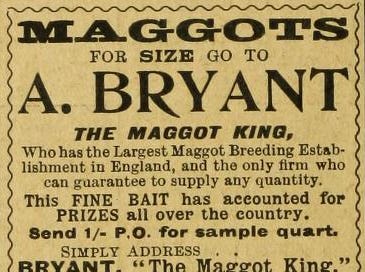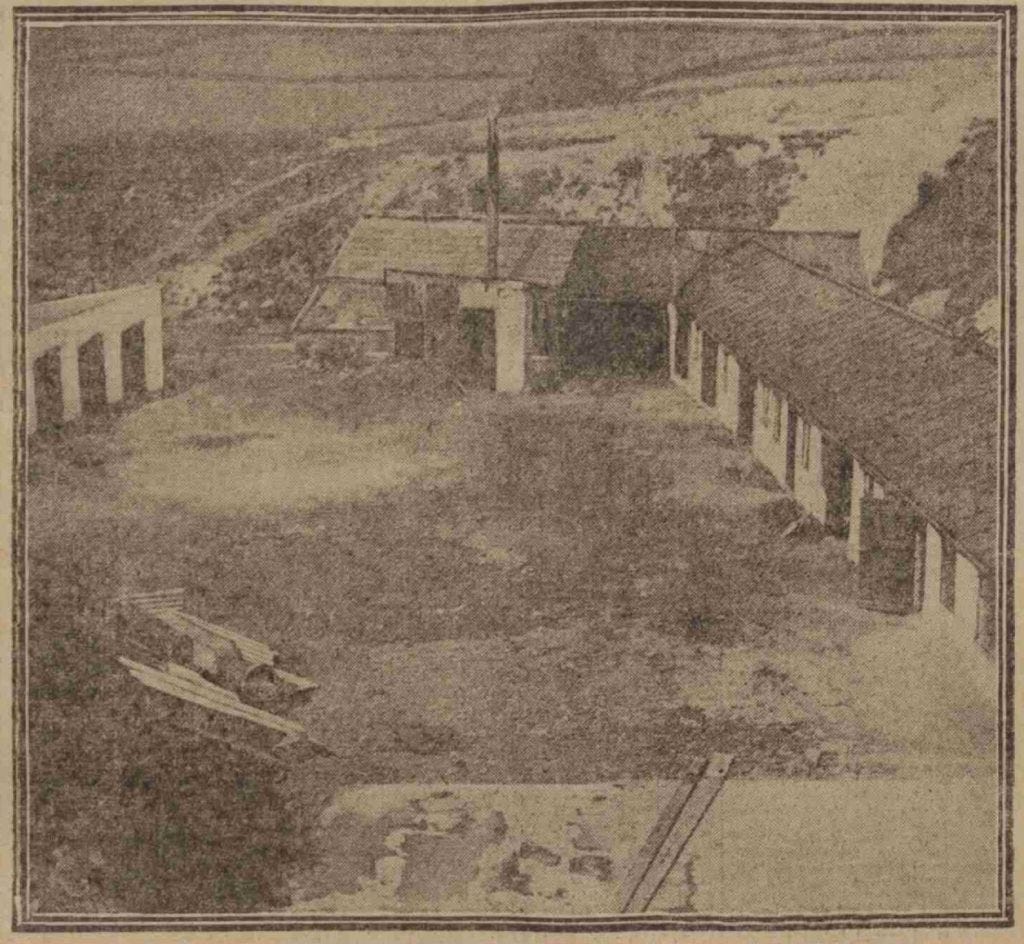The maggotorium cure for tuberculosis
A keen angler stumbled upon a malodorous treatment for consumption in the early 20th century.
Welcome to The Quack Doctor, a weekly publication that unearths stories from medicine’s past. Subscribe for free to receive new posts and support my work.
A version of this article has previously appeared on thequackdoctor.com
Maggots might be humble and oft-maligned creatures, but they have some important roles in the circle of life. Not only do they clear dead things from the environment and recycle nutrients, but they can also give humans a helping hand. Their employment in both ancient and modern medicine to debride necrotic wound tissue is well known – but this story is about another episode in their history.
In August 1911, a chemist reported to the Chemist and Druggist on a visit to an unusual treatment centre. The place was Jerusalem Farm, Thornton, near Bradford, where Arthur Edward Bryant grew maggots for fishing bait. Bryant, who had once been diagnosed with pulmonary tuberculosis, claimed that since he started his enterprise he had entirely recovered.
Arthur Bryant was born in Preston Bissett, Buckinghamshire, in 1879. He left home at 17, keen to escape a demoralising life of working 100 hours a week only to have to give all his wages (except one penny) to his mother. He set off for Yorkshire and took various jobs as a brickworker, farmhand and collier, saving £6 in the Yorkshire Penny Bank within his first year. Bryant was also a keen angler, and began breeding maggots on a small scale to use and sell. By becoming a knackerman too, he always had enough decaying flesh to keep his wriggly crop happy, and soon became known as ‘The Maggot King’.
In 1911, the business was thriving, and with Bryant’s tuberculosis symptoms gone, he opened up his maggot-breeding sheds to people who had lost hope with the conventional sanatoria of the time. The ‘Maggotorium’ was born.
The Chemist and Druggist’s correspondent described an unenticing scene. The patients spent three hours in the morning and two hours in the afternoon inhaling the stench of decaying meat.
‘On first entering one is overcome with the heat and the strong smell of ammonia, but after a time one gets used to it,’ the correspondent said.1
Another contemporary description agreed that the place did not offer the height of luxury:
He has two long, narrow sheds, divided into compartments, separated from each other and each entered by a separate door; each shed is traversed by pipes for heating purposes. On either side of the door are troughs, in which are placed fragments of the carcases (offal, and so forth) of the beasts dealt with. While lying here flies have free access for the deposition of eggs, which rapidly develop into larva at suitable temperatures.2
Bryant himself, the Yorkshire Evening Post said, was ‘a man of healthy appearance, free from all signs of sickness, and of an exceptionally happy and light-hearted disposition.’ His organisational skills appeared lacking – he kept few patient records and was uncertain how many people had undergone treatment or benefited from it – but he came across as ‘a man of active and good intelligence and transparent honesty.’3
Persuaded by his own experience that the treatment worked, Bryant nevertheless sought to confirm its efficacy scientifically, and called in the Bradford City Analyst, Mr F. W. Richardson, to carry out some tests of the maggoty air.
Richardson found ammonia and trimethylamine present in significant quantities, as well as mono- and dimethylamine and traces of indole and skatole (components of poo smell). On experimenting further he found that even weak solutions of these substances destroyed microbes after a few hours’ exposure.

Bryant did not charge patients to attend the maggotorium; on the contrary, he provided them with food at his own expense. The ‘Maggot Cure’ wasn’t a money-making scheme but one whose discoverer went out of pocket in his enthusiasm to make it available to all. He put together plans for a more comfortable sanatorium room above the maggot sheds, where patients could benefit from the fumes without having to sit next to decaying flesh. Although these were initially rejected, Denholme Urban Council passed Bryant’s revised plans in October 1911.
For reasons that are unclear, the scheme did not come to fruition, and by 1915, Bryant had returned to Buckinghamshire, where he continued to farm maggots for angling, but didn’t pursue the sanatorium idea. Although there was medical interest in the treatment of TB through inhalation, Britain had quite a lot on its plate at this period and the maggot gases’ potential appears to have been neglected, other than by a few similar maggotoria that did not last.
In 2007, Milton Wainwright, Amar Laswd and Sulaiman Alharbi of the University of Sheffield showed that gases produced by blue blowfly larvae on beef heart inhibited the growth of Mycobacterium phlei (which served as a model for the more dangerous Mycobacterium tuberculosis). A simulated version of the maggot gas, comprising di- and trimethylamine and ammonia, had a similar effect, as did ammonia vapour alone. Wainwright et al. did not rule out the possibility that Bryant’s Maggotorium had successfully treated TB patients – and, given the increasing resistance of the TB bacillus to antibiotic drugs, they suggested that ‘perhaps we may not have seen the last of maggot inhalation therapy.’4
It’s unlikely that future patients would have to sit in a shed next to a trough of rotten meat, but if research does end up producing an effective TB treatment based on the gaseous emissions of maggots, we could one day benefit from the legacy of The Maggot King.








